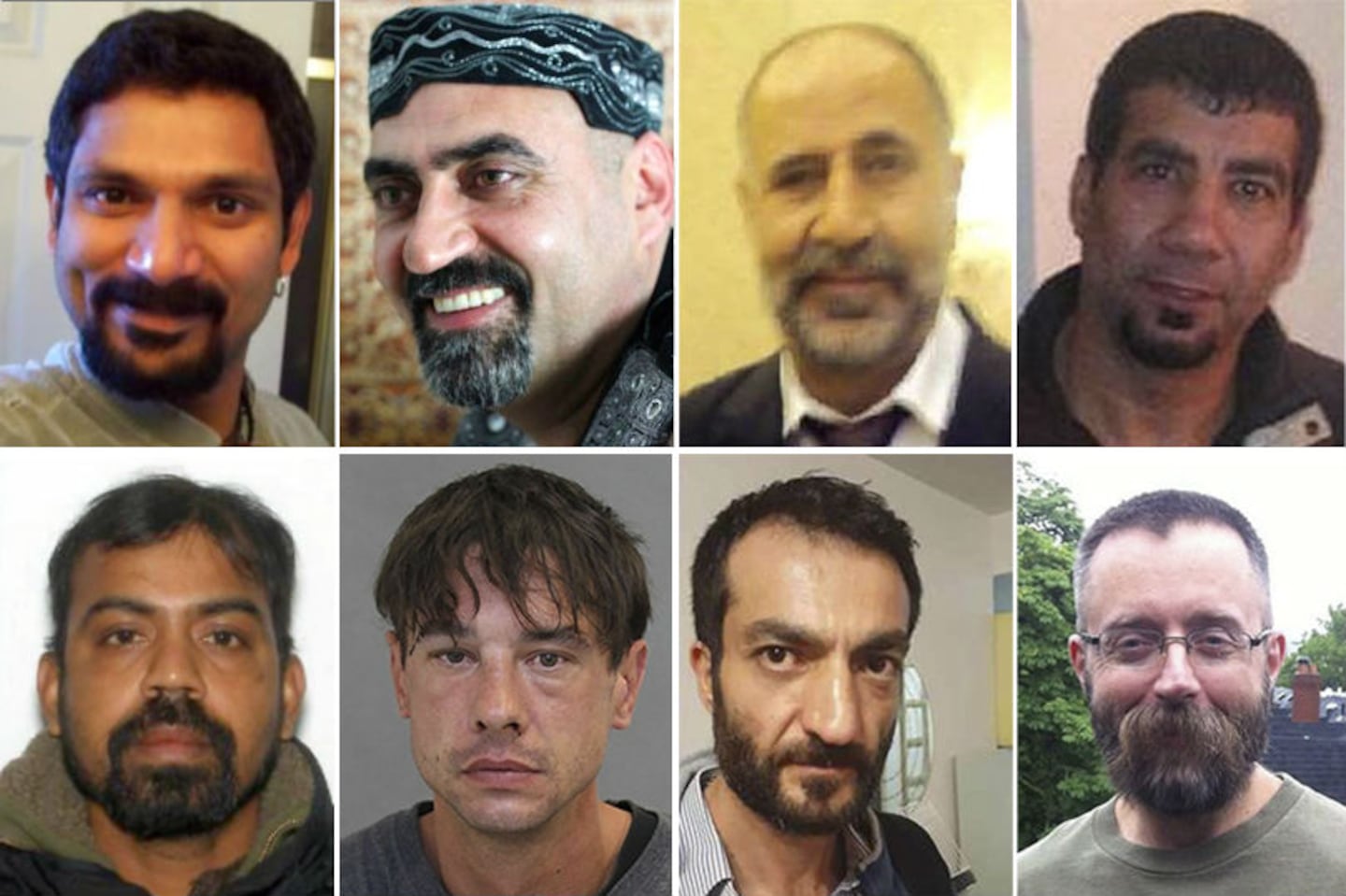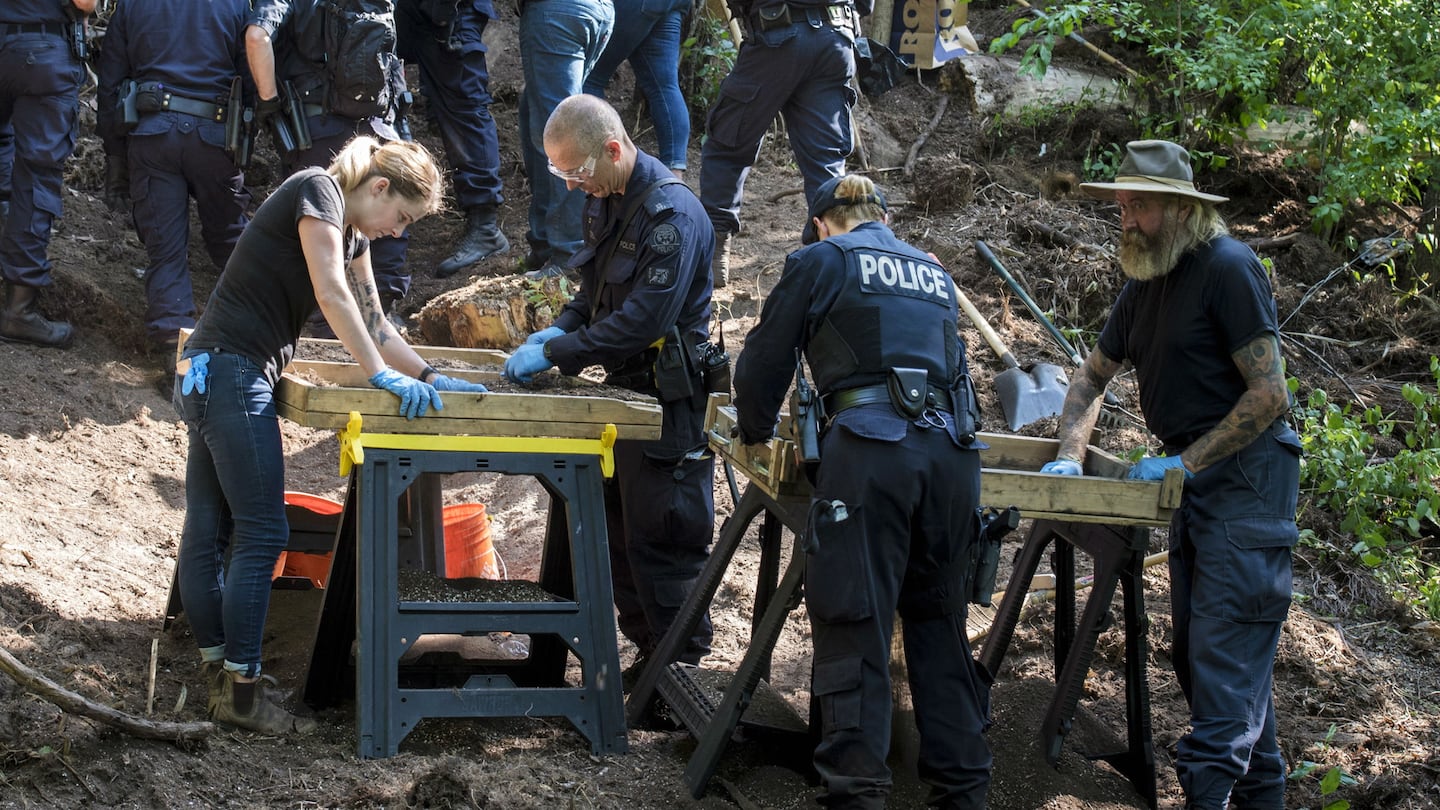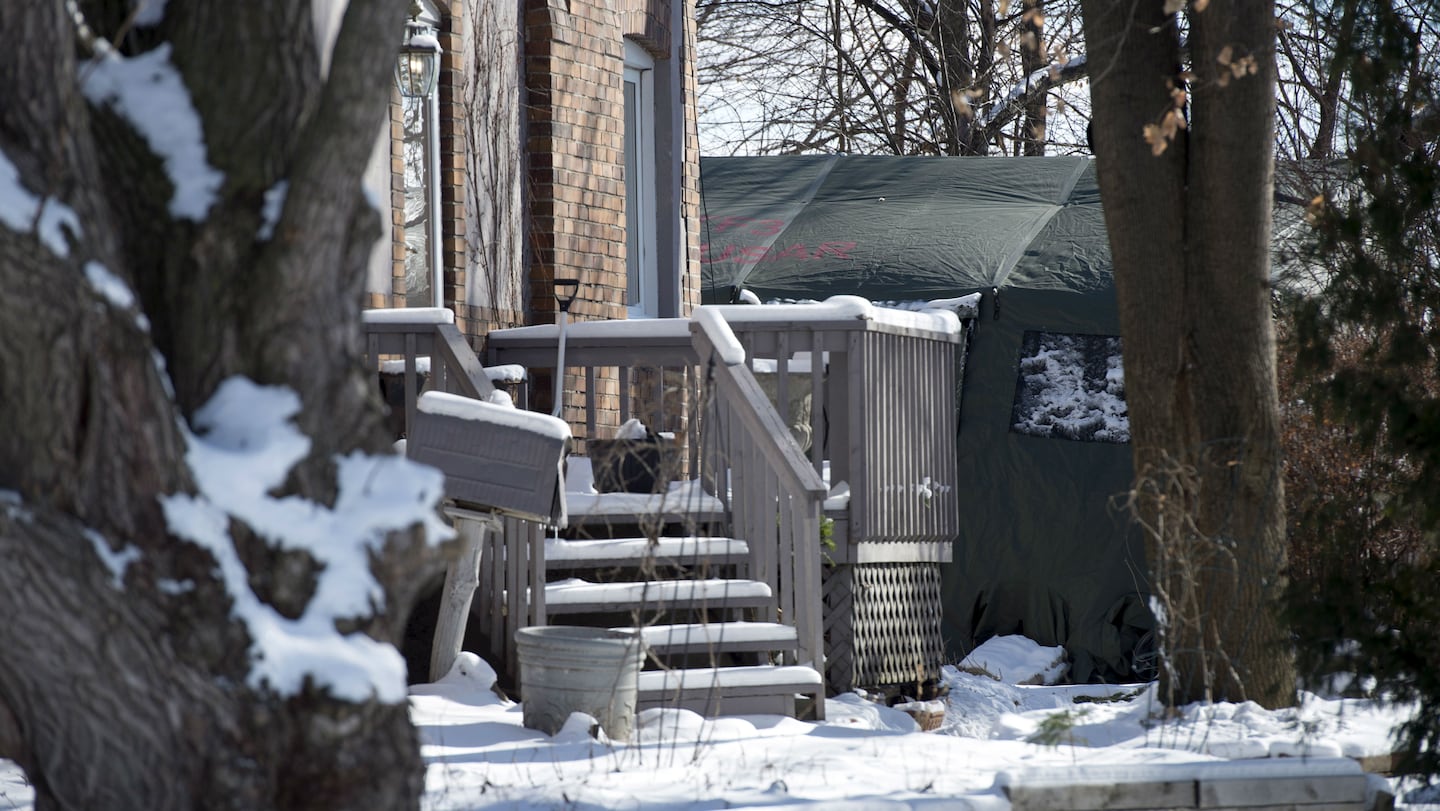TORONTO — A Toronto landscaper who killed eight men and buried their body parts in potted plants and a ravine at one of his job sites took photos of his victims, whom he posed naked and unconscious, sometimes wearing a fur coat or hat and holding a cigar between their slack lips, a Canadian court heard Monday.
Bruce McArthur, 67, pleaded guilty Jan. 29 to murdering Skandaraj Navaratnam, Abdulbasir Faizi, Majeed Kayhan, Soroush Mahmudi, Kirushnakumar Kanagaratnam, Dean Lisowick, Selim Esen and Andrew Kinsman, according to CTV News Toronto. McArthur, who is gay, picked up several of his victims in Toronto's Church-Wellesley Village area, a predominantly gay downtown neighborhood that is also known as Gay Village.
"Mr. McArthur intended and caused all of their deaths," Crown attorney Michael Cantlon said during McArthur's Jan. 29 plea hearing. "After he murdered the men, Mr. McArthur, in an effort to avoid detection, dismembered their bodies."
TRENDING NOW:
The majority of the men's remains were hidden inside large outdoor planters at a home where he worked, according to a statement of facts filed with the Superior Court of Justice. The rest were buried in a ravine adjacent to that property.
The owner of the home, Karen Fraser, last week pointed out to a CTV News crew eight trees the City of Toronto has planted along the ravine to honor the men -- two of whom she said she met when they accompanied McArthur as he worked on her property. She said the McArthur who killed the victims is not the man she and her husband knew.
"We call it 'Bruce A' and 'Bruce B,'" Fraser told the news agency. "'Bruce A' was a man who seemed to have made decisions about his life and was very happy with it. He enjoyed his job. He enjoyed his clients."
“(He) never got bored with the plants. He was very talented at it. He was very fond of his children. He was a great grandfather. He was the best friend, neighbor, relative that anyone could want. That was ‘Bruce A.’ ‘Bruce B,’ who was that? I don’t know.”
Pictured are the victims of admitted Toronto serial killer Bruce McArthur. Top row, from left, are Skandaraj “Skanda” Navaratnam, 40; Abdulbasir “Basir” Faizi, 42; Majeed “Hamid” Kayhan, 58; and Soroush Mahmudi, 50. Bottom row, from left, are Kirushnakumar "Kumar" Kanagaratnam, 37; Dean Lisowick, 47; Selim Esen, 44; and Andrew Kinsman, 49. McArthur, a 67-year-old landscaper, pleaded guilty Tuesday, Jan. 29, 2019, to eight counts of first-degree murder in connection with their deaths and dismemberment.
‘The news crushed me’
Most of McArthur’s victims were gay and had immigrated to Canada from the Middle East or South Africa. Several family members and friends spoke of their loss during the first few days of the sentencing hearing, which began Monday.
"I don't know that I can properly describe the pain and suffering that I and my family have gone through over the years, and I believe that this suffering will continue to affect us forever," Kayhan's brother, Jalil Kayhan, wrote in a statement, according to The Canadian Press.
Describing his family as “very traditional,” Kayhan wrote that his slain brother has two children, three grandchildren and a number of nieces and nephews.
“This has impacted all of their health and well-being,” he wrote.
Jean-Guy Cloutier, a friend who reported McArthur’s first victim, Navaratnam, missing in 2010, said he was devastated by his friend’s disappearance, and then once again when he learned his fate.
"The news crushed me," Cloutier said, according to The Canadian Press. "When a person goes missing, it brings up another level of anxiety and a loss that is hard to describe. Having someone that I loved dearly killed is another level of loss, and life-changing."
In this artist's sketch, admitted serial killer Bruce McArthur, center, attends the first day of his sentencing hearing in Toronto on Monday, Feb. 4, 2019. McArthur, a 67-year-old landscaper, has pleaded guilty to eight counts of first-degree murder in the deaths of men he picked up in and around Toronto's Gay Village neighborhood. (Photo: Alexandra Newbould/The Canadian Press via AP)
Kanagaratnam, who, like Navaratnam, was from Sri Lanka, fled to Canada to escape violence in his homeland, a friend, Paranavan Thangavel, told the court. Kanagaratnam was denied refugee status just a couple of months before he disappeared.
"Torture and murders like these are incidents that occur all too frequently in Sri Lanka," Thangavel said. "For us now to hear of such a horrible death, we who live in this world as refugees feel like there is no safety for us anywhere in the world."
Mahmudi’s widow, Umme Fareena Mazook, sobbed as a Crown attorney read her statement in court, The Canadian Press reported. She and Kareema Faizi detailed their struggles to make ends meet after their husbands vanished.
Faizi told the court she works 18 hours a day to provide for her daughters, who were 6 and 10 when their father was killed in 2010.
"They pretend to be strong in front of me," Faizi said of her daughters. "But when they are alone in their room, they take a picture of their father with them. I hear them crying constantly."
Read more of the victims’ impact statements here.
Photos and other trophies of death
Prosecutors last week shared publicly for the first time some of the evidence they uncovered during searches of McArthur's home and van. That evidence included what could be considered McArthur's "murder kit" -- a duffel bag holding duct tape, a surgical glove, rope, zip ties, a bungee cord and syringes, the statement of fact said.
Investigators also found objects with victims’ DNA on them inside McArthur’s van, along with the weapon used to kill at least two of the victims. The public learned Monday, the first day of McArthur’s sentencing hearing, that the murder weapon was a metal bar that had a rope attached to it to fashion a garrote.
"This created a mechanism whereby rotating the bar would turn the knot, increasing pressure on the neck," another statement of facts in the case said, according to CTV News.
All of McArthur’s victims died of ligature strangulation.
Cantlon told the court that photos found on the hard drive of McArthur's laptop were some of the most disturbing evidence -- photos of the victims, naked and either unconscious or dead. The murder weapon could be seen around the necks of some of the men, CTV News reported.
Some of the photos showed the unwitting models wearing a fur coat or fur hat, with unlit cigars placed in their mouths, the court heard.
The photos indicated that the victims were restrained and sexually assaulted before they were killed, Cantlon said. The photos were separated into eight folders, each labeled with a victim’s name, on McArthur’s computer.
In this July 5, 2018, photo, members of the Toronto Police Service excavate a ravine behind a Mallory Crescent home connected to admitted serial killer Bruce McArthur. McArthur, a 67-year-old landscaper, pleaded guilty Tuesday, Jan. 29, 2019, to eight counts of first-degree murder in the deaths of men he picked up in or around Toronto’s Gay Village neighborhood. Photo: Tijana Martin/The Canadian Press via AP
There was a ninth folder labeled "John," the name of McArthur's potential ninth victim, who investigators said was found tied up on McArthur's bed when police busted into his home Jan. 18, 2018, to arrest him. Investigators had McArthur under surveillance and grew concerned when he took a young man up to his apartment.
CTV News reported that the court heard Monday that John had been invited to McArthur's home, where he'd been told to undress quickly because McArthur's son or roommate might come home soon. After he was naked, he was handcuffed to the bed and a black bag was placed over his head, prosecutors said.
McArthur refused to remove the bag and, when the man got it off his head himself, McArthur then tried to tape his mouth shut.
"A forensic analysis of Mr. McArthur's computer showed that on the day of Mr. Kinsman's murder, Mr. McArthur had searched for John and downloaded photographs of him from social media," Cantlon said, according to CTV News.
Detectives also found some of the victims’ belongings in McArthur’s home. They found a bracelet belonging to Navaratnam, 40, who became McArthur’s first known victim when he vanished from Gay Village in September 2010.
They also found jewelry belonging to Lisowick, a 47-year-old homeless man who they believe was killed in April 2016, CTV News reported. A notebook belonging to Esen was also found.
Esen, 44, was reported missing in April 2017.
A timeline of murder
One statement of facts obtained by the news agency detailed a timeline of the murders:
Navaratnam was killed on or about Sept. 6, 2010. During the investigation, detectives found a piece of leather lacing in McArthur’s van that contained Navaratnam’s DNA. His bracelet was found in McArthur’s bedroom.
Faizi, 42, was killed on or about Dec. 29, 2010, after disappearing from Gay Village. His abandoned vehicle was found near a home to which McArthur had access at the time of the slaying.
Kayhan, 58, was killed on or about Oct. 18, 2012, in a murder described as “sexual in nature.” Like Faizi and Navaratnam before him, Kayhan vanished from Gay Village. His body was one of the ones staged for photos after the killing.
Toronto police investigators in 2012 established Project Houston, a task force that sought to solve the disappearances of Navaratnam, Faizi and Kayhan, but it was disbanded after 18 months, the Toronto Star reported last year.
Mahmudi, 50, was killed on or about Aug. 15, 2015, another victim of a sexual killing. The statement of facts said evidence was found that McArthur used ligatures to bind Mahmudi and, after killing him, staged his body. A coat found in McArthur’s van held Mahmudi’s DNA.
Kanagaratnam, 37, was killed under similar circumstances as Mahmudi on or about Jan. 6, 2016. According to CTV News, he was never reported missing and had no clear ties to the LGBTQ community.
Kanagaratnam was identified after investigators released a heavily touched-up photo of a victim in a public effort to identify the man.
A police forensics tent sits in the backyard of a house on Mallory Crescent in Toronto on Tuesday, Jan. 30, 2018. Police found human remains of eight men buried in potted plants at the home, as well as in an adjacent ravine, while investigating the case against admitted serial killer Bruce McArthur. The 67-year-old landscaper pleaded guilty Tuesday, Jan. 29, 2019, to eight counts of first-degree murder in the deaths of the men, who he picked up in and around Toronto’s Gay Village neighborhood. Photo: Frank Gunn/The Canadian Press via AP
Lisowick was killed on or about April 23, 2016. Again, the killing was sexual in nature, Lisowick was bound with a ligature and there was evidence of staging after his death.
Esen was killed on or about April 16, 2017, in a sexual killing. Detectives found evidence that he had been bound with rope when he was killed, and Esen’s DNA was found in McArthur’s van. The murder weapon found in the vehicle also had Esen’s DNA on it.
Kinsman, 49, was the final victim, killed on or about June 26, 2017, the date on which his calendar had a notation -- “Bruce.” Kinsman, who provided the link to McArthur that authorities needed to solve the case, also died in a sexual killing and was bound with rope during his slaying.
Video surveillance obtained by authorities showed Kinsman getting into McArthur’s van outside his home the day he disappeared, the court document said. Kinsman’s DNA was found in the vehicle, as well as on the garrote used to kill him.
Despite the 2012 investigation into the disappearances of McArthur's first three victims, he was not on police detectives' radar until Kinsman's disappearance, CTV News reported. LGBTQ advocates in Toronto have accused police and city officials of not taking the disappearances of the victims, most of whom were gay immigrants, seriously enough.
McArthur is expected to be sentenced Friday, according to The Canadian Press.
Cox Media Group









